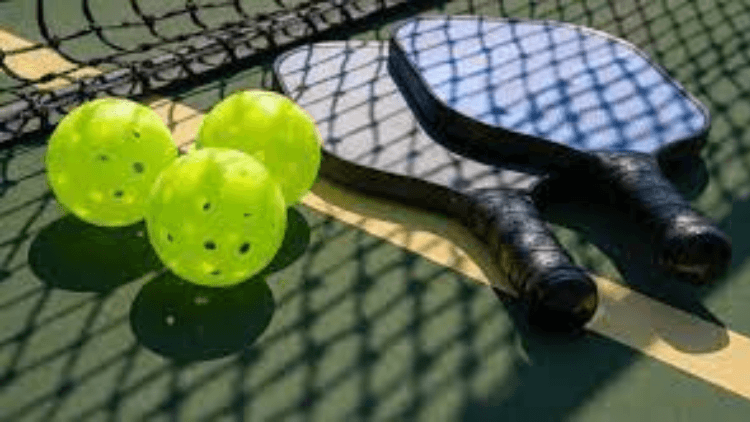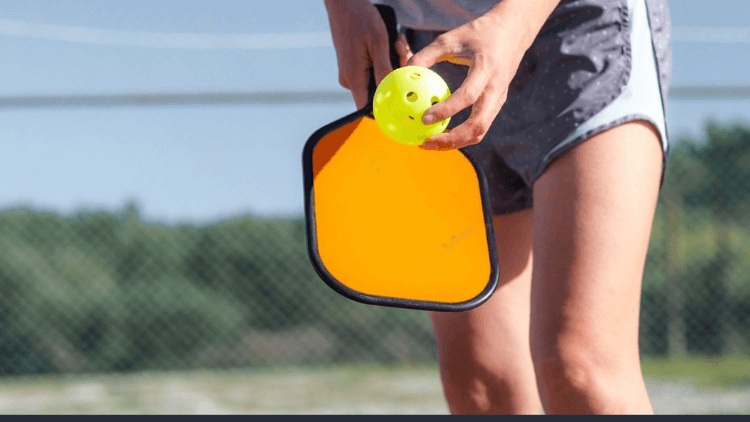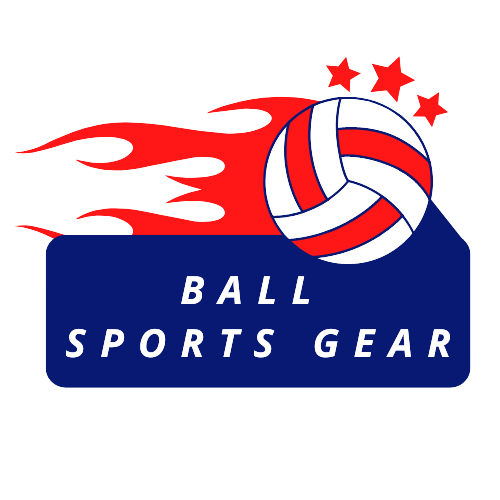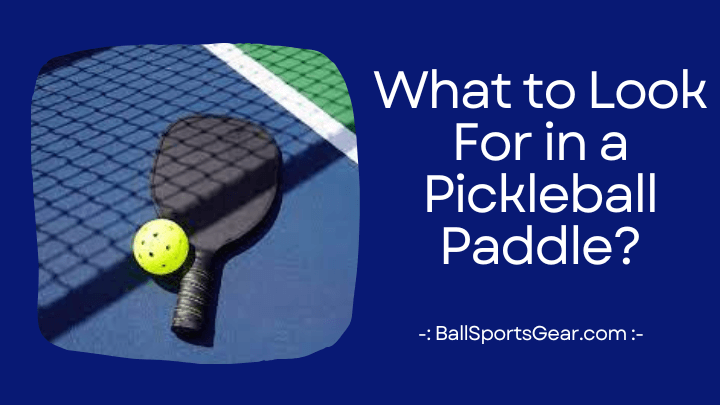Tennis, badminton, and ping-pong components are all present in the entertaining and thrilling game of pickleball. Regardless of age or ability level, everyone can play, and it has numerous positive social and health effects. However, you must have the proper gear, notably the paddle, to fully enjoy the game.
As it affects how you smash the ball, how much control you have over your shots, and how at ease you feel on the court, the paddle is the most crucial piece of equipment in pickleball. The poor paddle selection can have an impact on your performance, enjoyment, and even health. For this reason, prior to making a purchase, it’s critical to understand what to look for in a pickleball paddle.
In this article, we will guide you through what to look for in a pickleball paddle when buying a pickleball paddle, such as weight, grip size, material, and shape. We will also give you some examples of paddles that fit each category, so you can have an idea of what’s available on the market. By the end of this article, you will be able to find the perfect paddle for your game!
Weight
The weight is one of the first factors to take into account when selecting a pickleball paddle. How hard you can smash the ball, how much control you have over your shots, and how much strain you exert on your arm and wrist all depend on the weight of the paddle.
| Weight Group | Weight Range (ounces) |
|---|---|
| Light | Under 7.2 |
| Mid | 7.3 – 8.4 |
| Heavy | Over 8.5 |
Lighter paddles provide better control and less strain, but they also have more vibration and less force. They are perfect for players who like to dink and drop shots, prefer delicacy over force, and have quick reflexes at the goal. They are also appropriate for athletes with wrist or arm conditions like tennis elbow or arthritis. They might not be able to provide enough force to propel the ball far or smash it ferociously, though.
More power and stability are provided by heavy paddles, but control and fatigue are decreased. They are perfect for players who enjoy hitting quickly and forcefully, who have strong wrists and arms, and who require greater force to swing the paddle. They are also suitable for players who play outdoors in windy conditions, as they can counteract the wind resistance better. However, they may cause more strain on the arm and wrist over time, and they may be harder to maneuver at the net.
Mid-weight paddles offer a good balance of both power and control. They are ideal for players who want a versatile paddle that can handle different types of shots and situations. They are also suitable for players who are not sure what weight is best for them or who want to switch between different styles of play.
Some examples of paddles in each weight category are:
- Light paddles: Selkirk Amped S2 Lightweight (6.9 oz), Gamma Needle Graphite (7 oz), Engage Encore Pro (7.1 oz)
- Mid-weight paddles: Onix Z5 Graphite (7.8 oz), Paddletek Tempest Wave Pro (7.9 oz), Selkirk Amped Epic (8 oz)
- Heavy paddles: ProLite Titan Pro (8.7 oz), Engage Poach Advantage (8.9 oz), Paddletek Bantam EX-L Pro (9 oz)
Grip Size
Another important factor to consider when choosing a pickleball paddle is the grip size. The grip size of the paddle should fit your hand well and prevent slippage and injury.

The grip size ranges from 4 to 4 ¾ inches in circumference, depending on the manufacturer and model of the paddle. To measure your hand size, wrap a tape measure around your palm just below your fingers and note the measurement in inches.
A smaller grip allows more wrist action and spin, while a larger grip provides more stability and comfort. A general rule of thumb is to choose the smallest grip size that still feels comfortable in your hand. However, if you are not sure what grip size is right for you or if you are between sizes, you can always adjust your grip by adding an overgrip or removing some tape from the handle.
Some tips on how to adjust your grip are:
- To increase your grip size by about 1/8 inch, add an overgrip over the existing grip.
- To decrease your grip size by about 1/8 inch, remove some tape from under the existing grip.
- To change the shape of your grip from round to oval or vice versa, use a heat gun or hair dryer to soften the existing grip and mold it with your hands.
Some examples of paddles with different grip sizes are:
- 4 inch grip: Selkirk Amped S2 Lightweight, Gamma Needle Graphite, Engage Encore Pro
- 4 1/8 inch grip: Onix Z5 Graphite, Paddletek Tempest Wave Pro, Selkirk Amped Epic
- 4 1/4 inch grip: ProLite Titan Pro, Engage Poach Advantage, Paddletek Bantam EX-L Pro
- 4 1/2 inch grip: Onix Evoke Premier, Selkirk Prime S2, Engage Elite Pro
Material
The material of the paddle affects its durability, performance, and price. Pickleball paddles are typically made of wood, graphite, or composite materials.
The heaviest and least expensive alternative is a wood paddle. They are useful for recreational or novice gamers who wish to check the game out without shelling out a lot of cash. They are useful for clubs or schools that have a lot of players that require paddles, as well. However, they don’t provide much in the way of performance or comfort, nor are they very strong or long-lasting.
Graphite paddles are lightweight and expensive. They are highly efficient and durable, as they have a thin layer of graphite over a honeycomb core. They offer a smooth and consistent surface that allows for precise and accurate shots. They also have a good balance of power and control, as they can transfer the energy from the paddle to the ball without losing much speed or spin. However, they may be too pricey for some players or too stiff for some preferences.
Composite paddles are constructed from a mix of synthetic elements, including fibreglass and graphite. Given that they may be altered in terms of weight, shape, size, colour, and design, they are the most flexible and customised solution. Depending on the kind and calibre of the materials used, they offer a broad variety of performance and characteristics. They may also have various surface coatings or textures that improve the ball’s grip or spin. Nevertheless, depending on the company and model, they could also differ in terms of consistency and durability.
Some examples of paddles with different materials are:
- Wood paddles: Amazin’ Aces Wood Pickleball Paddle Set (9.5 oz), Rally Meister Wood Pickleball Paddle Set (10 oz), Franklin Sports Wood Pickleball Paddle Set (10.5 oz)
- Graphite paddles: Selkirk Amped S2 Lightweight (6.9 oz), Onix Z5 Graphite (7.8 oz), ProLite Titan Pro (8.7 oz)
- Composite paddles: Gamma Needle Graphite (7 oz), Paddletek Tempest Wave Pro (7.9 oz), Engage Poach Advantage (8.9 oz)
Shape
The surface area, reach, and spin of the paddle are all influenced by its form. The forms of pickleball paddles vary, including conventional, widebody, elongated, and edgeless.

Standard paddles are 15 34 inches long and 8 inches wide. They are suitable for players who need a paddle that can handle any shot or circumstance. The majority of the paddle face is covered by a sizable sweet spot, and the handles are a good length for a secure grip.
Wide body paddles have a width of up to 8 ¼ inches and a length of up to 16 inches. They are good for beginners or players who need more surface area to hit the ball. They have an even larger sweet spot that covers almost the entire paddle face and a shorter handle length that reduces the overall weight.
Paddles that are elongated can be up to 17 inches long and up to 7 inches wide. They are beneficial for experienced players who require greater reach and strength. They feature a longer handle length that increases leverage and swing speed and a smaller sweet spot that is located close to the paddle’s tip.
Paddles without an edge lack a protecting rim at the edge. Players that desire greater control and spin should use them. They are balanced and feature a smooth surface that prevents dead spots or mishits. They also have a standard handle length.
Some examples of paddles with different shapes are:
- Standard paddles: Selkirk Amped S2 Lightweight (6.9 oz), Onix Z5 Graphite (7.8 oz), ProLite Titan Pro (8.7 oz)
- Widebody paddles: Gamma Needle Graphite (7 oz), Paddletek Tempest Wave Pro (7.9 oz), Engage Poach Advantage (8.9 oz)
- Elongated paddles: Selkirk Amped Maxima Lightweight (6.9 oz), Onix Evoke Premier (7.8 oz), Engage Elite Pro Maverick (8 oz)
- Edgeless paddles: Selkirk Prime S2 (7.4 oz), Onix Out
Frequently Asked Questions
Pickleball paddles come in different shapes: traditional, elongated, and widebody. Traditional shapes offer a balanced feel, elongated paddles provide a larger sweet spot and extra reach, while wide body paddles have a wider face for more forgiveness on off-center shots.
The core material affects the paddle’s feel and performance. Paddles with a polypropylene or Nomex core offer more power and responsiveness, while aluminum or polymer cores provide a softer touch and better control.
The core material affects the paddle’s feel and performance. Paddles with a polypropylene or Nomex core offer more power and responsiveness, while aluminum or polymer cores provide a softer touch and better contro.
One-piece paddles are more durable and offer consistent play, while two-piece paddles have a separate face and edge guard, making it easier and more cost-effective to replace the edge guard if damaged.
Conclusion
In conclusion, when considering what to look for in a pickleball paddle, several key factors should be taken into account. These include paddle material, weight, grip size, face texture, and overall paddle design. By evaluating these aspects and considering personal preferences and playing style, players can make an informed decision to find the ideal pickleball paddle that suits their needs and enhances their performance on the court.

